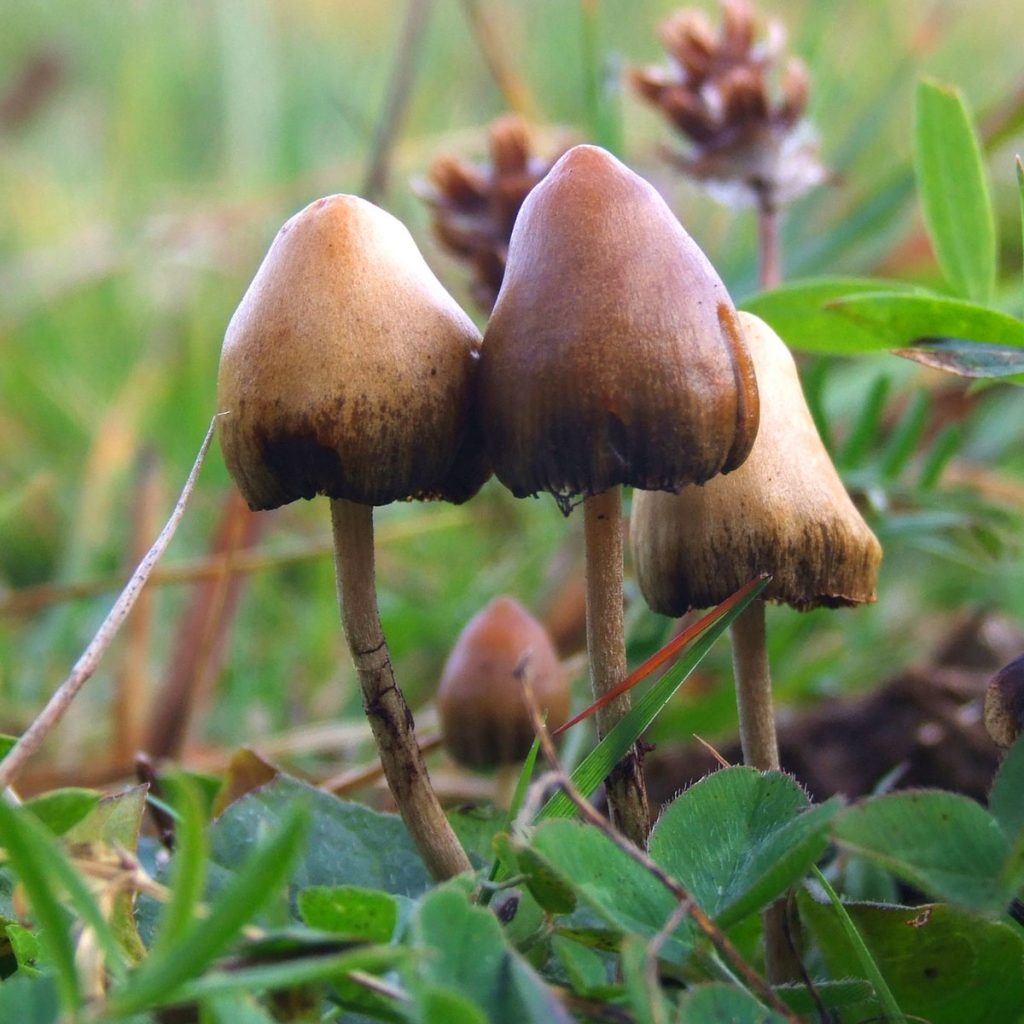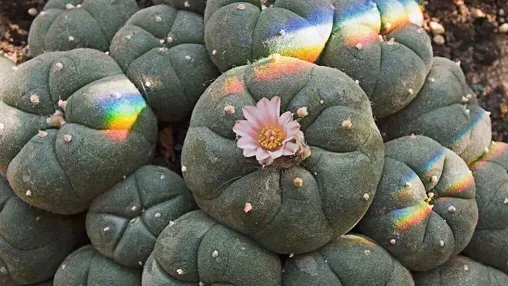The ancient Maya civilisation, which flourished in Mesoamerica from approximately 2000 BC to 1500 AD, is known for its impressive achievements in mathematics, astronomy, and architecture. However, one aspect of Maya culture that is often overlooked is their extensive use of plant medicine in their religious practices. The Maya believed that plants were sacred and had the power to connect them with their gods. In this article, we will explore how the ancient Maya people used plant medicine to speak to their gods and the evidence that supports this argument.
The Maya civilisation was centered in what is now Mexico, Guatemala, Belize, and parts of Honduras and El Salvador. This region is home to a diverse array of plant species, many of which the Maya used for medicinal purposes. The Maya believed that certain plants had the power to heal physical ailments, but also had spiritual properties that allowed them to communicate with the gods. These plants were used in various religious ceremonies and rituals, often administered by trained shamans or healers.
Plant Medicine – Psilocybin Mushrooms
One of the most famous plant medicines used by the Maya was psilocybin mushrooms, which contain the psychoactive compound psilocybin. Psilocybin mushrooms grow naturally in the forests of Mesoamerica, and their use in religious rituals dates back at least 2,000 years. The Maya referred to these mushrooms as “teonanácatl,” which translates to “flesh of the gods.” The use of teonanácatl was so ingrained in Maya culture that even today, in some parts of Mexico and Guatemala, the mushrooms are still used in traditional religious practices.

Evidence of the Maya’s use of psilocybin mushrooms comes from a variety of sources. The earliest evidence comes from pottery vessels found in Guatemala that date back to 300 BC. These vessels depict scenes of mushroom ceremonies, with figures wearing mushroom caps and performing rituals. Other evidence comes from the writings of Spanish conquistadors who arrived in Mesoamerica in the 16th century. One such conquistador, Bernardino de Sahagún, wrote about the use of teonanácatl in his famous work “General History of the Things of New Spain.” Sahagún described how the mushrooms were consumed in religious ceremonies and were believed to allow the participants to communicate directly with the gods.
Another plant medicine used by the Maya was the Peyote cactus, which contains the psychoactive compound mescaline. The cactus was used in religious rituals as a way to connect with the divine. Like the psilocybin mushrooms, the use of Peyote cactus dates back at least 2,000 years. The cactus was often consumed in a drink called “aguacolla,” which was made by boiling the cactus in water.
Evidence of the Maya’s use of Peyote cactus comes from a variety of sources as well. Like the psilocybin mushrooms, depictions of the cactus can be found on ancient pottery vessels. Spanish conquistadors also wrote about the use of Peyote cactus in their accounts of the conquest. One such account comes from the conquistador Pedro de Cieza de León, who wrote about a ceremony he witnessed in which the Maya consumed the cactus and danced in a trance-like state.
The Maya also used a variety of other plant medicines in their religious practices, including tobacco, morning glory seeds, and ayahuasca. Tobacco was considered a sacred plant by the Maya and was used in various rituals, including offerings to the gods. Morning glory seeds contain the psychoactive compound LSA and were used in religious ceremonies to induce visions. Ayahuasca, a powerful psychedelic brew made from the ayahuasca vine and other plants, was not used by the Maya, but is used extensively in other indigenous cultures
Plant Medicine – Peyote
Peyote is a small, spineless cactus native to Mexico and the southwestern United States. For centuries, it has been used by indigenous communities in these regions for its psychoactive properties, as well as its spiritual and medicinal benefits. Recently, a number of scientific studies have been conducted to examine the effects of peyote consumption on human physiology and behavior. In the next few paragraphs, we will explore some of the findings from these studies and their implications for our understanding of this remarkable plant.

One of the most well-known active compounds in peyote is mescaline, which is a powerful psychedelic substance that can induce vivid hallucinations and altered states of consciousness. Despite its psychoactive properties, peyote has been used by indigenous communities for centuries in spiritual and religious ceremonies. These ceremonies are often led by a shaman or spiritual leader and are considered to be a way to connect with the divine.
Recent scientific studies have shed light on some of the physiological effects of peyote consumption. For example, a study published in the journal Psychopharmacology in 2018 found that mescaline consumption resulted in changes in brain activity in areas associated with sensory perception and self-awareness. Specifically, the study found that mescaline induced a decrease in activity in the default mode network, which is a network of brain regions that is active when we are not engaged in any specific task. This decrease in activity was associated with an increase in feelings of unity and connectedness with others and the environment.
Another study, published in the journal Human Psychopharmacology in 2016, examined the effects of peyote consumption on mood and behavior. The study found that individuals who consumed peyote experienced an increase in positive mood and a decrease in negative mood. The participants also reported an increase in feelings of empathy and a decrease in feelings of hostility. The researchers suggested that these changes in mood and behavior may be related to the psychoactive effects of mescaline, as well as the spiritual and social context in which the peyote ceremony takes place.
Peyote has also been studied for its potential therapeutic benefits. In a study published in the Journal of Psychoactive Drugs in 2017, researchers examined the use of peyote as a treatment for alcoholism. The study found that peyote consumption was associated with a significant reduction in alcohol consumption, as well as an increase in overall well-being and spiritual experiences. The researchers suggested that peyote may be a promising treatment for alcoholism and other addictive disorders, although more research is needed to fully understand its potential benefits.
Modern Usage Guidelines
- Informed Consent: Participants should be provided with detailed information about the risks and benefits of the study, and they should give their voluntary informed consent to participate.
- Participant Screening: Participants should be screened for medical conditions, psychiatric history, and medications that may interact with the hallucinogen. Individuals with a history of mental illness or other health problems that may be exacerbated by hallucinogen use should not participate.
- Dosage Control: The dose of hallucinogen should be carefully controlled to minimize the risk of adverse reactions. Dosage should be based on individual factors, such as body weight and previous experience with the drug.
- Supervision: Participants should be carefully supervised throughout the study by trained staff. There should be a designated person responsible for monitoring the physical and psychological well-being of the participant.
- Setting: The setting for hallucinogen use should be carefully chosen to minimize the risk of adverse reactions. A comfortable and safe environment with minimal distractions is ideal. Participants should have access to water and a bathroom, and they should not be left alone.
- Integration: Participants should be provided with appropriate follow-up care after the study, including debriefing and integration sessions. These sessions can help participants make sense of their experience and incorporate any insights gained into their daily life.
- Emergency Response: Staff should be trained in emergency response protocols, including the administration of medication to manage adverse reactions. There should be a designated person responsible for contacting emergency medical services if necessary.
Overall, safety guidelines for human hallucinogen consumption aim to minimise the risk of adverse reactions while allowing participants to experience the potential benefits of these substances.
Conclusion
In conclusion, peyote and other plant medicines are remarkable plants that has been used for millennia by indigenous communities for their psychoactive, spiritual, and medicinal properties. Recent scientific studies have shed light on some of the physiological effects of peyote consumption, as well as its therapeutic benefits. Overall, the findings from these studies underscore the importance of respecting and preserving the traditional cultural practices associated with plant medicine consumption, while also promoting their benefits in a scientific context.
Sources
- Frecska, E., Bokor, P., & Winkelman, M. (2016). The Therapeutic Potentials of Ayahuasca: Possible Effects against Various Diseases of Civilization. Frontiers in Pharmacology, 7, 35. https://doi.org/10.3389/fphar.2016.00035
This article examines the potential therapeutic benefits of ayahuasca, a psychoactive brew used in traditional Amazonian medicine that contains the same active compound (DMT) as peyote. It suggests that ayahuasca and other plant medicines like peyote may have a role to play in the treatment of various diseases of civilization, including addiction, depression, and anxiety.
- Johnson, M. W., Richards, W. A., & Griffiths, R. R. (2008). Human hallucinogen research: Guidelines for safety. Journal of Psychopharmacology, 22(6), 603–620. https://doi.org/10.1177/0269881108093587
This article provides guidelines for the safe conduct of human hallucinogen research, including studies of peyote and other psychoactive substances. It emphasizes the importance of informed consent, appropriate screening of participants, and careful monitoring of their physical and psychological well-being during and after the study.
- Ospina-Giraldo, M. D. P., Palacio-Acosta, C. A., & Miranda-Casas, C. (2019). The sacred cactus and the psychiatric patient: A review of the therapeutic potential of Peyote and its use in psychotherapy. Mental Health, Religion & Culture, 22(10), 1043–1058. https://doi.org/10.1080/13674676.2019.1658773
This article provides a review of the literature on the therapeutic potential of peyote and its use in psychotherapy, including its potential benefits for individuals with mental health conditions. It highlights the need for further research on the safety and efficacy of peyote in therapeutic settings, while also acknowledging the cultural significance of the plant and the need to respect traditional practices.

